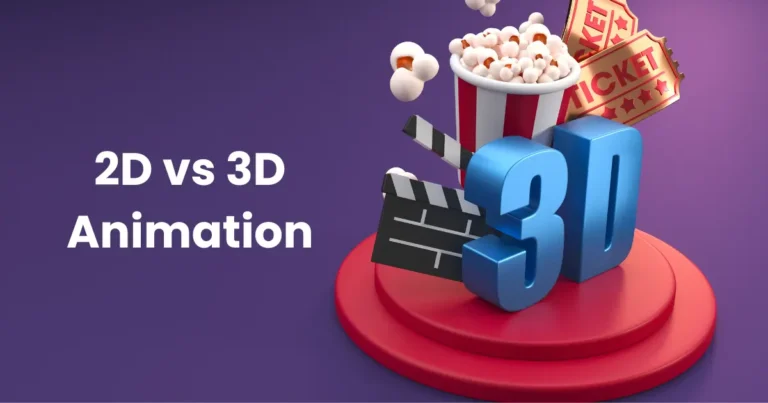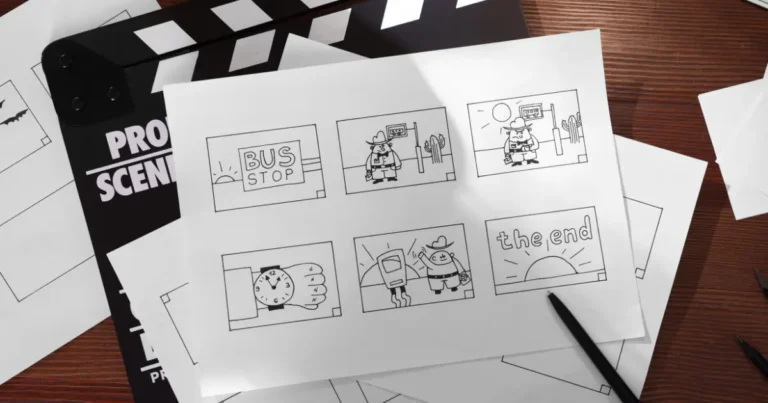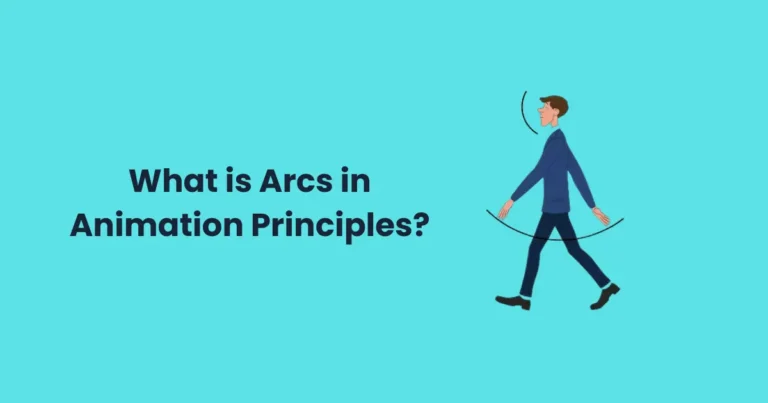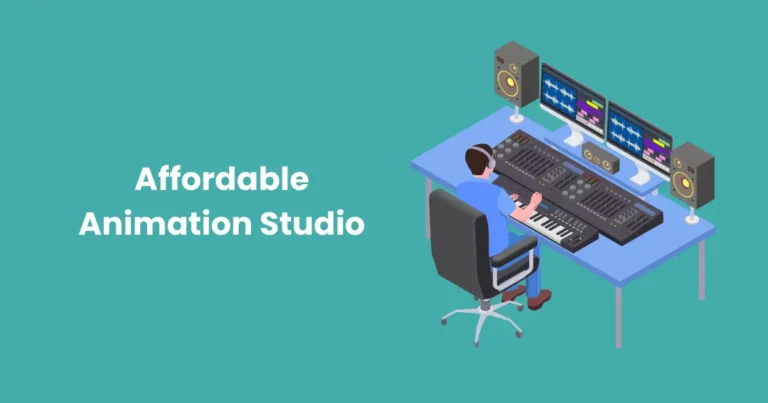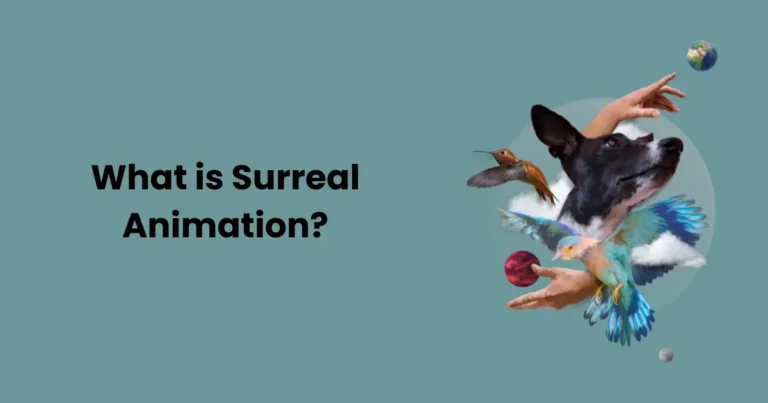Exploring Clay Animation | What Claymation and How does it works
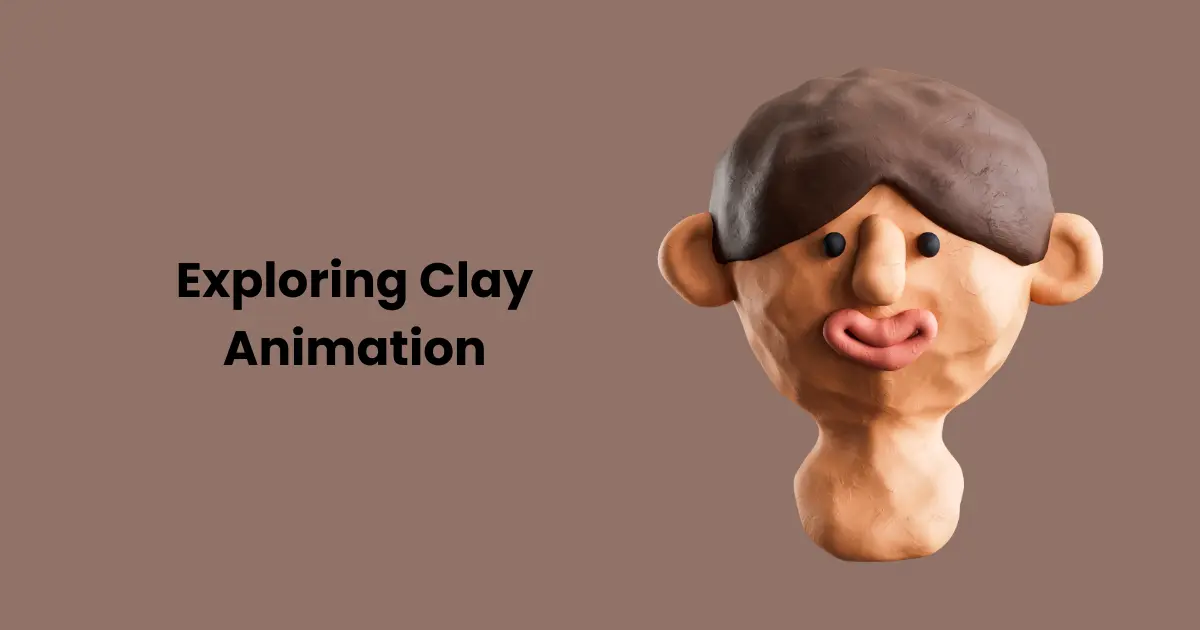
Contents
Clay animation, also known as claymation, is a fascinating form of stop-motion animation where characters and environments are sculpted from pliable materials like plasticine clay. These clay figures are meticulously manipulated frame by frame, creating the illusion of movement when played in sequence. Claymation has a tactile and handmade charm that sets it apart from other animation techniques, giving it a unique visual appeal.
The origins of clay animation can be traced back to the early 20th century. One of the earliest known clay animations was The Sculptor’s Nightmare (1908), but it wasn’t until the mid-20th century that Claymation began gaining widespread recognition. Pioneering creators like Art Clokey, who introduced Gumby in the 1950s, played a significant role in popularizing this art form. Over the decades, studios like Aardman Animations brought clay animation to new heights with classics like Wallace and Gromit and Chicken Run.
Clay animation has maintained its niche in the digital era due to its handmade authenticity, offering a refreshing alternative to computer-generated imagery. Its enduring popularity is a testament to the creativity and dedication of animators who continue to push the boundaries of this medium. By embracing Claymation, creators have found a way to tell stories that are both visually captivating and emotionally resonant, making it a timeless art form.
The Unique Charm of Claymation
Clay animation stands out among other animation styles because of its handcrafted appeal and unique storytelling possibilities. Each frame in a Claymation sequence reflects the animator’s meticulous effort, making the process more personal and artistic. Unlike digital animation, clay animation gives characters and scenes a tactile, three-dimensional quality that resonates with audiences of all ages.

This technique is also incredibly versatile, allowing animators to create surreal and imaginative worlds that feel tangible. The imperfections in Claymation, such as visible fingerprints or slight changes in texture, add character and charm, reinforcing its human touch.
Iconic Clay Animation Examples
Over the years, clay animation has produced some of the most beloved works in the animation world. Aardman Animations, for instance, has become synonymous with claymation through iconic films like Wallace and Gromit and Chicken Run. These productions showcase the potential of Claymation to deliver humor, warmth, and emotional depth.
On the independent scene, Mary and Max by Adam Elliot demonstrated the medium’s ability to explore profound themes like loneliness and friendship with sensitivity and creativity. Even short Claymations, such as those featured in TV commercials or festival circuits, have captivated audiences with their whimsical and often surreal storytelling.
Claymation’s charm lies in its ability to connect with viewers on a visceral level, offering a blend of nostalgia and novelty. Its enduring appeal is a testament to the timelessness of this art form and the creativity of the artists who bring clay characters to life.
How Clay Animation Works

Materials and Tools Needed
Creating clay animation requires specific materials and tools to sculpt characters and craft scenes. Here’s a breakdown of essentials:
- Clay or Plasticine: A malleable material that doesn’t harden, perfect for repeated manipulation.
- Armatures: Wire skeletons used to give structure and flexibility to clay models.
- Animation Stage: A stable surface for arranging scenes and characters.
- Camera: A high-resolution camera for capturing each frame.
- Lighting Equipment: Consistent lighting is crucial for maintaining visual continuity.
- Stop-Motion Software: Tools like Dragonframe help animators capture and sequence frames effectively.
Step-by-Step Process of Clay Animation
- Concept and Storyboarding
Begin by developing a story and creating a storyboard to outline each scene and shot. This provides a clear roadmap for the animation process. - Sculpting Characters and Sets
Sculpt the characters and design the environment using clay. Use armatures for complex figures to ensure they hold their poses during animation. - Positioning and Framing
Arrange the characters and set elements on the animation stage. Position the camera to capture the desired angle, ensuring consistency throughout the project. - Animating Frame by Frame
Move the clay figures slightly for each frame to simulate motion. Capture one frame at a time using stop-motion software. Repeat this process, making subtle adjustments to achieve smooth movement. - Editing and Post-Production
Compile the frames in software, adjusting timing and transitions. Add sound effects, music, and dialogue to enhance the animation.
Tips for Success
- Keep movements small to ensure smoother animation.
- Mark character positions to maintain alignment between frames.
- Use consistent lighting to avoid flickering in the final video.
By understanding and following these steps, animators can create captivating clay animations that bring their imaginative ideas to life. Claymation is both challenging and rewarding, offering endless opportunities for creative expression.
Techniques in Clay Animation
Clay animation encompasses several methods, each offering unique possibilities for storytelling and visual expression. Here are the primary techniques used in Claymation:
1. Stop-Motion Clay Animation
Stop-motion is the most common technique in Claymation. It involves capturing a series of photographs, where each photo represents a slight movement of the clay models. When these frames are played in sequence, they create the illusion of motion.
- Process:
- Sculpt characters and props.
- Move them incrementally for each frame.
- Capture each position with a camera.
- Benefits:
- Delivers a highly detailed and realistic animation style.
- Provides complete control over every aspect of movement.
- Examples:
Films like Chicken Run and Wallace and Gromit use stop-motion to bring their characters to life.
2. Armature-Based Claymation
This technique uses wire or metal skeletons (armatures) inside clay figures. These armatures make it easier to pose and stabilize the characters during animation.
- Advantages:
- Reduces the risk of clay figures collapsing or losing shape.
- Allows for more complex and fluid movements, such as walking or dancing.
- Tips for Animators:
- Use flexible but sturdy materials like aluminum wire for armatures.
- Cover the armature with layers of clay for sculpting details.
3. Freeform Clay Animation
In freeform animation, clay is continuously reshaped to create dynamic, evolving visuals. Unlike stop-motion or armature-based techniques, freeform animation often avoids strict frame-by-frame continuity.
- Characteristics:
- The clay can transform from one shape to another within the animation.
- Ideal for abstract or experimental projects.
- Applications:
- Frequently used for artistic shorts or music videos to convey surreal or fluid storytelling.
4. Replacement Animation
This approach involves swapping out different clay parts or pre-sculpted facial expressions between frames to create movement.
- How It Works:
- Sculpt multiple versions of the same object or character part (e.g., eyes, mouths).
- Replace these parts frame by frame to simulate expressions or actions.
- Benefits:
- Speeds up the animation process for specific movements.
- Provides precision, especially for complex facial expressions.
Each of these techniques in Claymation offers unique creative possibilities, whether you’re telling a whimsical story, creating abstract art, or crafting a visually stunning commercial. Mastering one or more of these methods can help animators produce truly memorable and engaging works.
Advantages and Challenges of Clay Animation
Clay animation is a remarkable art form that combines creativity, craftsmanship, and storytelling. While it offers numerous benefits, it also comes with its own set of challenges. Here’s a detailed look at both:

Advantages of Clay Animation
- Tactile and Unique Visual Appeal
- The handcrafted nature of Claymation gives it a distinct, organic look that’s difficult to replicate digitally.
- Imperfections like fingerprints or textures add personality and charm to the visuals.
- Creative Flexibility
- Clay can be molded into any shape or form, offering limitless creative possibilities.
- The medium is ideal for surreal or imaginative worlds that push the boundaries of storytelling.
- Timeless Appeal
- Clay animation has a nostalgic charm that resonates with audiences of all ages.
- Iconic works like Wallace and Gromit have demonstrated the enduring popularity of this medium.
- Low-Cost Production
- Compared to high-end computer animation, Claymation requires minimal investment in materials and equipment.
- It’s accessible to independent creators or hobbyists who want to experiment with stop-motion.
- Hands-On Experience
- Working with clay provides a direct, hands-on connection to the animation process, making it deeply rewarding for creators.
Challenges of Clay Animation
- Time-Intensive Process
- Animators must manipulate models frame by frame, making clay animation a slow and labor-intensive process.
- Even short projects can take weeks or months to complete.
- Fragility of Models
- Clay figures are prone to deformation, especially during repeated manipulation.
- Maintaining consistency in the models’ shapes and details between frames can be challenging.
- Lighting and Continuity Issues
- Small changes in lighting or setup can cause flickering or inconsistencies in the final animation.
- Maintaining continuity across hundreds or thousands of frames requires careful planning.
- Limited Movement Range
- Unlike computer-generated characters, clay models have physical limitations in movement.
- Complex actions, like running or jumping, require extra effort and creative problem-solving.
- Storage and Preservation
- Clay models can dry out, crack, or become damaged over time, making it challenging to preserve them for future use or reshoots.
Balancing the Advantages and Challenges
Despite the challenges, clay animation’s artistic benefits often outweigh its difficulties. Animators who embrace this medium develop a keen eye for detail, patience, and problem-solving skills. With proper planning, the hurdles of Claymation can be overcome, resulting in captivating works of art that stand the test of time.
Claymation’s charm lies in its imperfections and the love poured into every frame. By acknowledging both its strengths and limitations, creators can unlock its full potential and bring their stories to life.
Applications of Clay Animation
Clay animation is a versatile medium with applications spanning entertainment, education, marketing, and art. Its ability to evoke emotion and captivate audiences makes it a popular choice in various industries.

1. Film and Television
- Claymation has long been a staple in movies and TV, producing some of the most beloved animated content.
- Examples:
- Feature films like Wallace and Gromit: The Curse of the Were-Rabbit and Chicken Run have set benchmarks for storytelling and animation quality.
- TV shows like Pingu and Gumby have charmed audiences with their simple yet engaging narratives.
Why It Works:
- Clay animation’s tactile and handcrafted aesthetic creates a sense of nostalgia and warmth, ideal for engaging viewers.
2. Advertising
- Brands often use Claymation in commercials to stand out with a unique visual style.
- Applications in Advertising:
- Stop-motion clay figures can convey humor, playfulness, or sophistication, depending on the brand’s message.
- Clay animations are frequently used in ads targeting children or family audiences due to their approachable and friendly nature.
Examples:
- Commercials for brands like Chevron (Claymation Cars) and Sony Bravia (Play-Doh Bunnies) have effectively used clay animation to leave a lasting impression.
3. Educational Content
- Claymation is an engaging tool for teaching complex concepts in schools, museums, or online platforms.
- Applications in Education:
- Creating short films to explain scientific phenomena, historical events, or moral lessons.
- Encouraging students to make their own Claymations as part of art or multimedia projects.
Benefits:
- The visual and tactile nature of Claymation makes learning interactive and memorable.
4. Social Media and Independent Art
- With the rise of social media platforms like Instagram, TikTok, and YouTube, Claymation has become a favorite for independent creators.
- Applications:
- Short, quirky clay animations designed for viral content.
- Artistic projects showcasing experimental or abstract storytelling.
Why It’s Popular:
- The handmade quality of Claymation helps content stand out in a digital-dominated landscape.
5. Video Games and Virtual Media
- Clay animation is also finding a niche in video games, where it lends a distinct aesthetic to characters and environments.
- Examples:
- Games like The Neverhood and Armikrog use Claymation to create unique, immersive experiences.
Clay animation’s adaptability and universal appeal make it an enduring choice across industries. Whether for education, entertainment, or advocacy, its handcrafted essence continues to captivate audiences worldwide.
Famous Claymation Creators and Studios
Clay animation has been shaped by talented creators and innovative studios whose work has left an indelible mark on the animation industry. Their dedication to the craft has elevated clay animation to an art form celebrated worldwide.

1. Aardman Animations
- Location: Bristol, United Kingdom
- Notable Creators: Peter Lord and David Sproxton, founders; Nick Park, a key contributor
- Iconic Works:
- Wallace and Gromit series
- Chicken Run
- Shaun the Sheep
Legacy:
Aardman Animations is synonymous with Claymation. Their distinctive characters, attention to detail, and humor have made them pioneers in the field. Nick Park’s Wallace and Gromit series has earned multiple Academy Awards, showcasing the studio’s excellence.
2. Art Clokey
- Famous For: Creator of Gumby
- Contributions:
- Art Clokey introduced clay animation to mainstream audiences with The Gumby Show in the 1950s.
- His characters and stories, like Gumby and Pokey, became cultural icons and inspired generations of animators.
Legacy:
Clokey’s work emphasized the whimsical and surreal possibilities of Claymation, setting the stage for its future growth.
3. Will Vinton Studios
- Founder: Will Vinton
- Notable Works:
- The California Raisins commercials
- The Adventures of Mark Twain
- Meet the Raisins!
Legacy:
Will Vinton coined the term “Claymation” and popularized the technique with his innovative storytelling and memorable characters. His work on The California Raisins became a cultural phenomenon in the 1980s, blending music and clay animation.
4. Adam Elliot
- Famous For:
- Harvie Krumpet (Academy Award winner for Best Animated Short Film)
- Mary and Max
Style:
Adam Elliot’s Claymations often explore emotional and deeply human themes, such as friendship, isolation, and mental health. His unique, handcrafted style and poignant storytelling have earned him critical acclaim.
5. LAIKA Studios
- Notable Works:
- While LAIKA is better known for stop-motion films like Coraline and Kubo and the Two Strings, their early works experimented with clay animation.
- They continue to push the boundaries of handcrafted animation, combining traditional techniques with modern technology.
6. Bruce Bickford
- Famous For: Collaborations with musician Frank Zappa on surreal clay animations like The Amazing Mr. Bickford.
Style:
Bickford’s work is highly intricate and surreal, often featuring fluid transformations and complex scenes that mesmerize viewers.
These creators and studios have not only mastered Claymation but also expanded its potential, inspiring countless artists to explore this enchanting art form. Their works continue to captivate audiences and preserve the charm of clay animation in an ever-evolving industry.
Claymation in the Digital Age
As digital technology transforms the animation industry, clay animation continues to find its place by blending traditional techniques with modern advancements. Despite the rise of CGI and 3D modeling, Claymation remains a beloved art form, benefiting from the digital tools that enhance its production and accessibility.

1. Enhanced Production Techniques
- Digital Tools for Frame Capture:
- Stop-motion software like Dragonframe allows animators to capture and sequence frames with precision, reducing production time.
- Onion-skinning features help animators align current frames with the previous ones for smoother motion.
- 3D Printing for Clay Models:
- Some studios now use 3D printers to create uniform clay parts, such as interchangeable facial expressions or accessories.
- This technique maintains the handcrafted aesthetic while improving consistency.
- Visual Effects Integration:
- Digital post-production tools enable the seamless addition of effects like fire, water, or lighting enhancements.
- Combining practical clay animation with CGI creates visually stunning results.
2. New Platforms for Distribution
- Streaming Services:
- Platforms like Netflix, Disney+, and Amazon Prime host Claymation films and series, introducing the medium to global audiences.
- Recent examples include Shaun the Sheep: The Flight Before Christmas on Netflix.
- Social Media and Independent Creators:
- Animators use platforms like YouTube, TikTok, and Instagram to share short clay animation videos.
- These bite-sized animations often go viral, attracting a new generation of fans.
3. Educational and Accessible Tools
- User-Friendly Animation Software:
- Entry-level software like Stop Motion Studio allows hobbyists and students to experiment with clay animation.
- Tutorials and online resources make learning Claymation more accessible than ever.
- Online Communities:
- Websites like Reddit and forums for animators provide spaces for sharing ideas, techniques, and feedback.
4. Collaboration with Digital Animation
- Hybrid Techniques:
- Combining clay animation with digital backgrounds or compositing creates hybrid animations that merge the best of both worlds.
- For instance, clay characters can be animated on green screens and placed in digitally created environments.
- Augmented Reality (AR) and Virtual Reality (VR):
- Clay animation is entering AR/VR experiences, where users can interact with clay characters in immersive environments.
- These technologies add an interactive dimension to traditional Claymation storytelling.
5. Resurgence of Nostalgia
- Revival of Classic Works:
- Digital remastering techniques bring older clay animation classics to a new audience, preserving them for future generations.
- Appeal to Nostalgic Audiences:
- The handcrafted charm of Claymation resonates with audiences seeking authenticity in an increasingly digital world.
Challenges in the Digital Age
- Competing with CGI:
- Clay animation remains labor-intensive compared to CGI, which can produce complex visuals more quickly.
- However, its uniqueness often justifies the effort, particularly for niche markets and artistic projects.
- Maintaining the Handcrafted Aesthetic:
- Over-reliance on digital enhancements risks losing the tactile, imperfect charm that defines Claymation.
- Balancing tradition with technology is crucial to preserving its identity.
In the digital age, clay animation continues to evolve, leveraging technology to enhance its production, distribution, and creative potential. Its enduring appeal lies in its ability to tell heartfelt stories through a handcrafted medium, even as it adapts to modern advancements. By embracing digital tools while staying true to its roots, clay animation remains a timeless and innovative art form.
Conclusion
Clay animation remains a timeless and captivating medium, offering a unique tactile quality that sets it apart from other forms of animation. The process of sculpting, animating, and bringing characters to life frame by frame fosters a deep sense of creativity and craftsmanship. While digital tools and software have made clay animation more accessible and efficient, the core of its charm lies in the handcrafted nature of the work, which continues to resonate with audiences worldwide. Whether you’re an aspiring animator or an experienced artist, Claymation provides a powerful way to tell stories with a distinctive and personal touch.
As the digital age continues to evolve, clay animation’s ability to adapt to new technologies ensures its relevance in contemporary animation. The fusion of traditional methods with modern tools has broadened the creative possibilities of this art form, allowing for even more immersive and innovative works. Whether used for film, advertising, education, or personal projects, Claymation remains a vital part of the animation world, continuing to inspire future generations of animators to experiment, explore, and push the boundaries of what’s possible in animation.

